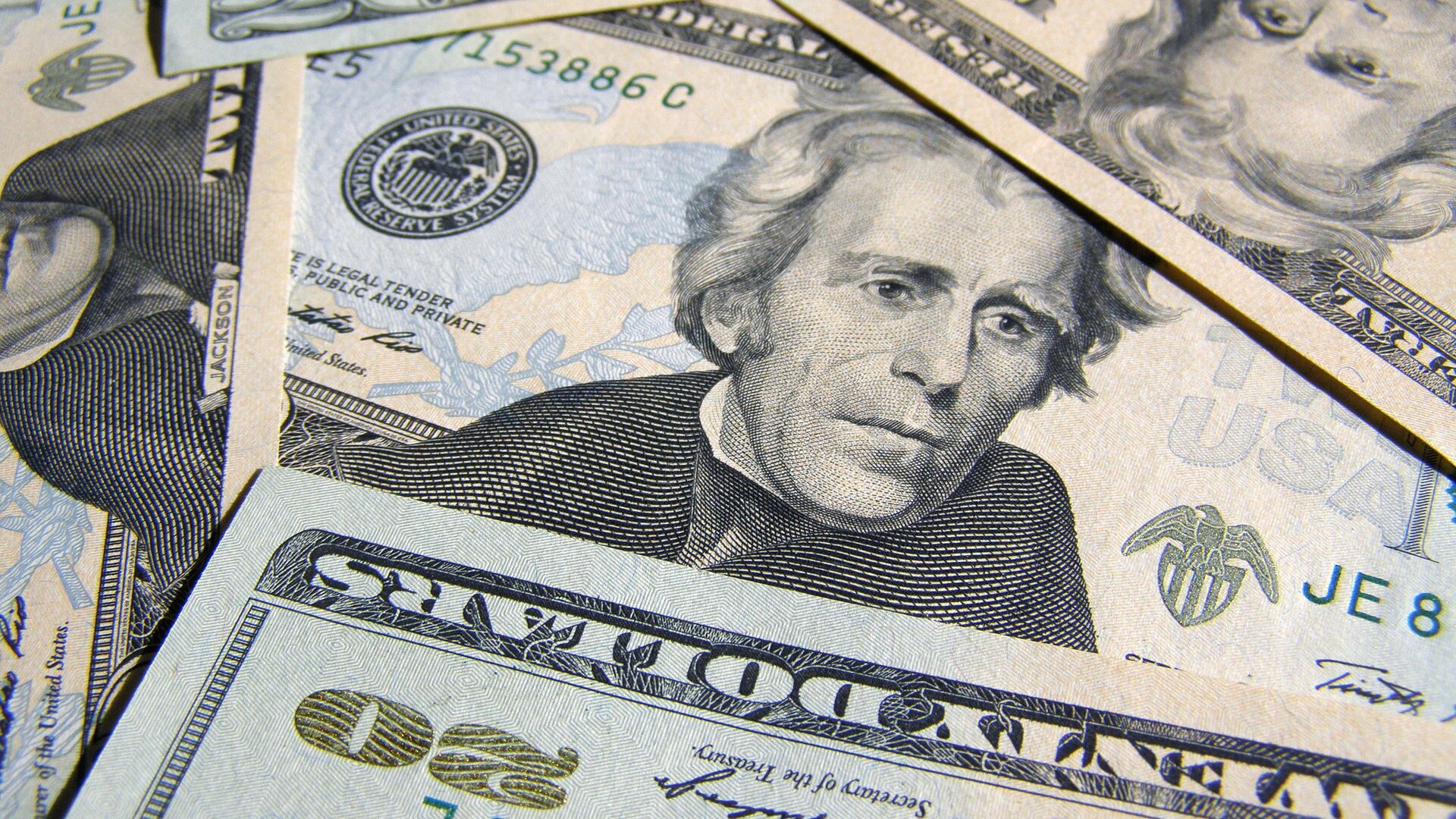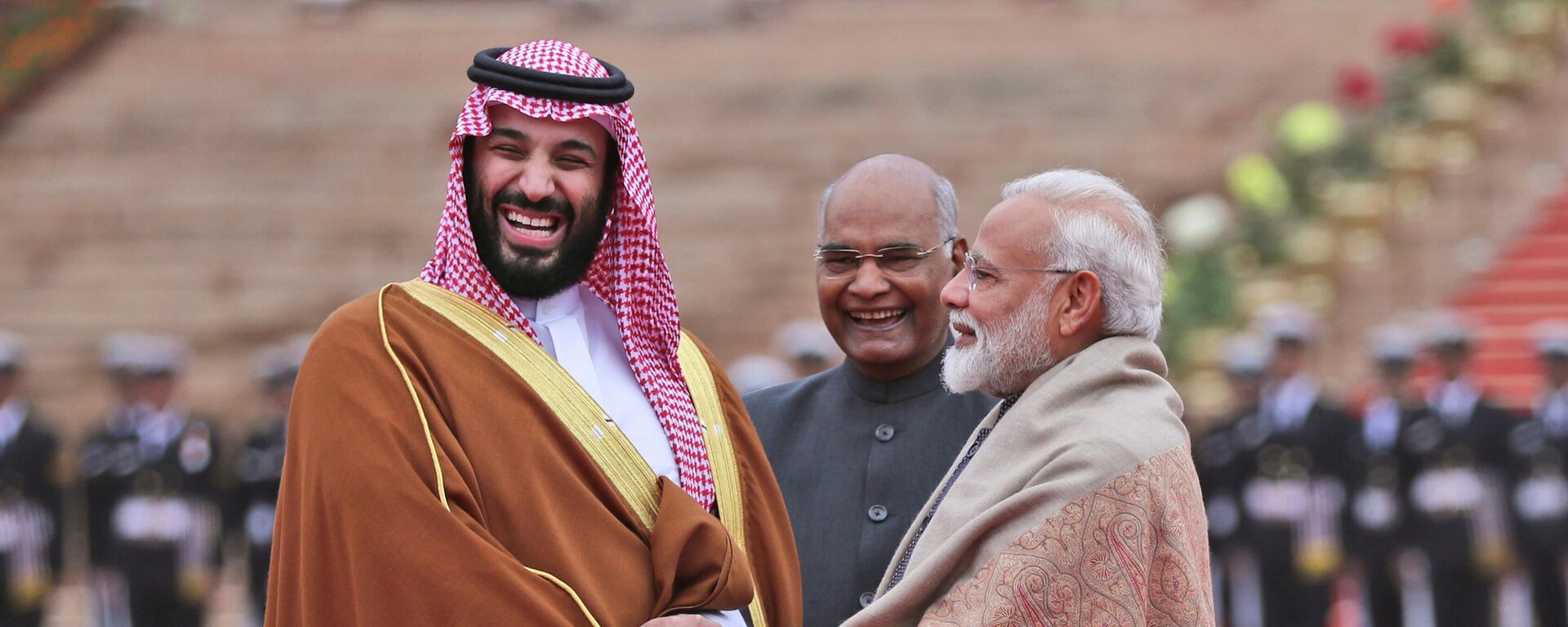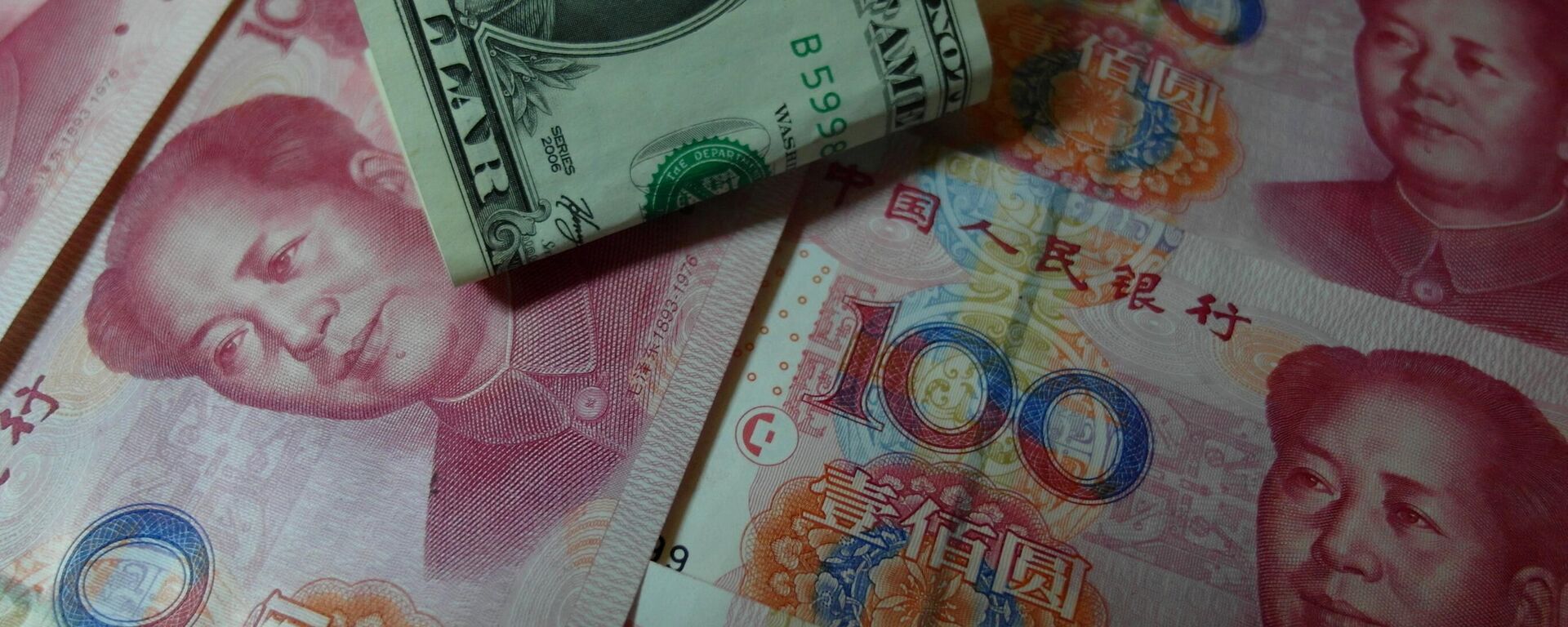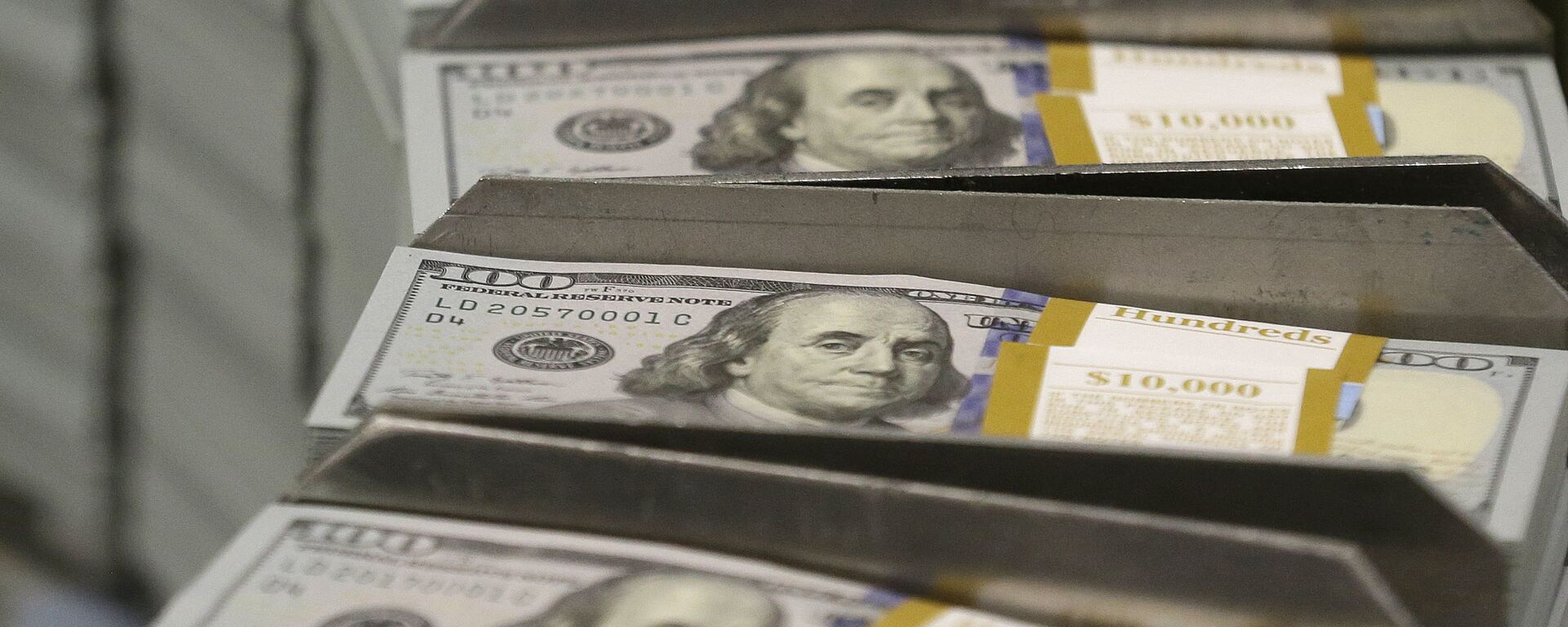What Can Replace US Dollar as World Reserve Currency?
14:00 GMT 23.05.2023 (Updated: 14:49 GMT 23.05.2023)
Subscribe
The NATO-Russia proxy war in Ukraine has served to hasten a global realignment, demonstrating from its earliest months that the United States no longer has the power to marshal its economic, political and military muscle to bully other countries into submission. This process has included renewed talk about alternatives to the dollar. What are they?
The ongoing drama in Washington about the debt ceiling and the prospects of the federal government running out of money and defaulting on its obligations has renewed debate about the dollar’s status as the world reserve currency – and whether its position is sustainable. The question on everyone’s minds is now no longer "can the dollar be dethroned," but "what could replace it?"
What is a World Reserve Currency?
A reserve currency is money recognized internationally as a stable, safe, and trusted store of value and accepted as a medium of exchange, within countries and between countries in trade. Central banks and major financial institutions use reserve currencies for international transactions, simplifying global trade and reducing the headaches often associated with trade in local currencies (such as imbalances between imports and exports, which can leave one country with stacks of the other’s currency which cannot easily be spent, as well as inflationary risks). Typically, a reserve currency is somewhat inflation-resistant, meaning that it is not as vulnerable to sudden drops in value as other forms of fiat money (i.e. money not backed by gold, or other commodities or resources of real, tangible value).
How Did the Dollar Become the World’s Reserve Currency?
The dollar became the world’s de facto reserve currency at the close of the Second World War with the emergence of the Bretton Woods Agreement – a monetary system responsible for managing commercial, financial and trade relations between the US and its post-war sphere of influence – including Canada, Western Europe, Australia and Japan and these countries’ various colonies and client states. The Bretton Woods Agreement gave rise to institutions like the World Bank, the International Monetary Fund and the General Agreement on Tariffs and Trade – precursor to the World Trade Organization.
The dollar was picked as a reserve currency due to America’s immense economic might at the close of World War II, when most of Europe and Asia lay in ruins. The dollar’s quasi-linkage to gold added confidence to its use, with Washington amassing nearly 18,000 tons of gold by the mid-to-late 1940s.
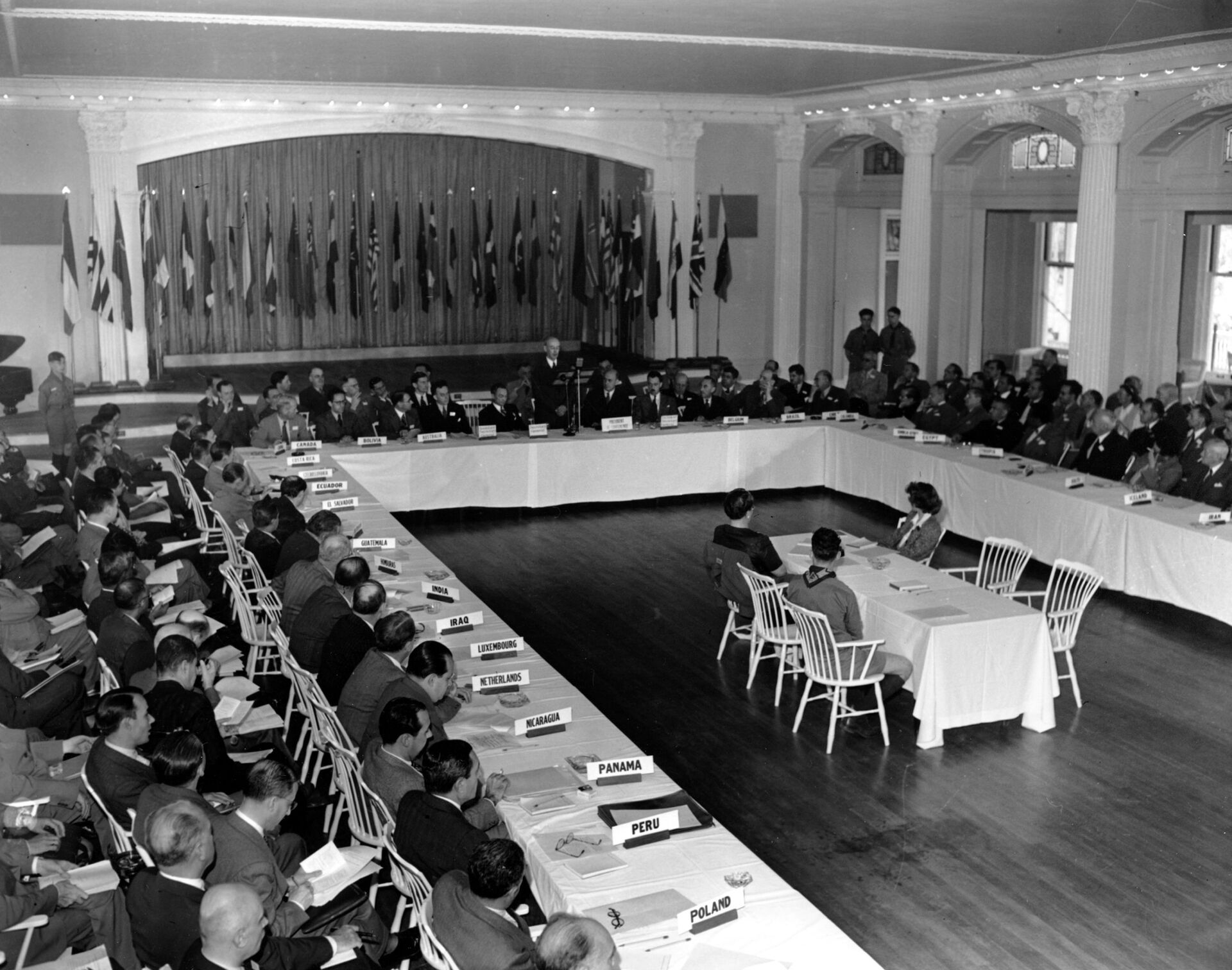
Participants of the Bretton Woods Conference at Mount Washington Hotel, Bretton Woods, New Hampshire, 1944.
© AP Photo / Abe Fox
The dollar’s hegemony was not immediately accepted as universal. The USSR, which joined the Bretton Woods negotiations but never ratified the agreements after coming to see them as tools for ensuring US global economic hegemony, had about 2,050 tons of gold in its reserves after World War II (giving up about 1,500 tons of the precious metal, along with other resources, to the US in exchange for lend lease aid).
Moscow ultimately created the Council of Mutual Economic Assistance, a Soviet-led economic bloc of nations in Eastern Europe and other socialist-oriented countries around the world. In its trade with the developing world, Moscow often forged barter-based agreements, trading energy, machine goods and various industrial products and engineering expertise for food and light industry products with countries like India, Egypt, and Cuba. The USSR abandoned the gold standard in international trade in 1961, weakening the position of the ruble vis-à-vis the dollar. The ruble became convertible in 1992, after the collapse of the USSR and the socialist bloc, and throughout the 1990s the dollar was often the preferred currency of transaction for major purchases in Russia and throughout Eastern Europe, further boosting its international strength.
The dollar received another dramatic boost in 1973, when Saudi Arabia and other oil-producing countries in the Middle East agreed to sell oil exclusively in dollars, and to “recycle” any surplus dollars they had by investing in the US economy and American debt, in exchange for weapons and defense commitments from Washington. This 50-year-old agreement is now under threat, with Riyadh expressing openness to trade in currencies besides the dollar, most notably including China’s yuan, in a major potential challenge to the US currency.
Is the Dollar the Only Reserve Currency?
Globally, the dollar remains the single most significant reserve currency, accounting for about 40 percent of global trade, nearly 90 percent of foreign exchange transactions, and about 60 percent of reserves held in foreign central banks.
The US is not the only game in town, however, with the euro, the single currency of the European Union, accounting for about 30 percent of trade, and 20 percent of countries’ foreign reserves. As a major currency, the euro is a popular choice for nations sanctioned by the United States, with Iran, for example, officially switching to euros (and to a lesser extent yuans) in its oil trade starting in 2012. However, the euro’s status has been hindered by its instability compared to the dollar, and by Brussels’ attempts to use its currency punitively to sanction other countries, emulating Washington.
Will the US Dollar Lose Its Status as World Reserve Currency?
“The empire game our government has been playing is coming to an end one way or another. This is the fate of all empires: they overextend themselves and then suffer a financial catastrophe, typically involving the destruction of the currency. We are already seeing the pattern emerging in our own case. We can either withdraw gracefully, as I propose, or we can stay in our fantasy world and wait until bankruptcy forces us to scale back our foreign commitments. Again, I know which option I prefer,” former Texas congressman and presidential candidate Ron Paul said in a speech in 2009.
A-decade-and-a-half later, Paul’s remarks are transforming from a warning into a prophesy, with a number of factors suggesting that the dollar is on the path to losing its status as an internationally-recognized store of value. These factors include:
The unsustainable ramping up of US debt, which doubled over the past decade alone and now stands at over $31.7 trillion, or over 123 percent of GDP. A debt this large increases the risks that eventually, Washington will be unable to pay it off.
The falling attractiveness of the dollar and dollar-denominated debt as an investment vehicle as the Federal Reserve fiddles with interest rates to try to get inflation under control (these activities recently culminated in the collapse of several major corporate lenders, including Silicon Valley Bank).
Efforts by more and more countries (including nations previously recognized as US client states) to increase the use of local currencies, yuans, euros, and other tools for trade instead of the dollar.
Fears stemming from the debt ceiling crisis that a failure to reach a consensus in Washington on spending cuts could cause a massive recession, meaning the plunging of confidence in the currency. Even if the present debt ceiling crisis is resolved, it will be sure to come up again the next time a vote in Congress on approving another hike in the debt ceiling is required.
Discussions by the BRICS nations (which have now surpassed the G7 in terms of overall economic power) on the creation of a common currency alternative to the dollar.
What Happens If the US Dollar is No Longer the Reserve Currency?
For nearly 80 years, the United States has used its unique position as the issuer of the world reserve currency to amass incredible wealth and global power. Not only does the dollar’s status enable US leaders to continually engage in excessive money printing to pay for spending beyond the nation’s means which would result in hyperinflation if tried in any other country, but trade in dollars allows the US to get real-world goods, like energy, food, and various consumer goods, in exchange for pieces of paper.
A sudden end to the dollar’s hegemony would likely trigger a global recession or even a depression, with countries, companies and individuals holding the bag on trillions in dollars or dollar-denominated debt facing bankruptcy, the shockwaves of which would ripple across the rest of the world economy. But the US would be hit the hardest in such a scenario, since the end of reserve status would mean the loss of a major tool of the country’s economic power, wealth, and global status.
Most economists don’t expect the dollar to disappear as a reserve currency entirely, but instead recede into the status of a regional currency, or one of a number of competing international currencies or payment means. This, it is hoped, would cushion the economic blow of a sudden collapse.
What Will Replace the US Dollar as World Reserve Currency?
China’s yuan has been touted as a major alternative to the dollar, and indeed, its growing share in global trade signals that the People’s Republic is on its way to challenging the US-led financial world order. However, this process is not unqualified, in light of restrictions on capital transactions in China, which hinder the currency’s attractiveness, and because of Beijing’s effective use of its money as a tool for economic growth (including regular devaluations designed to increase the attractiveness of Chinese-made products abroad, for example, or the emission of money for major state investment projects, which ordinarily comes with inflationary penalties).
A BRICS-based common currency for international trade may be an effective alternative, and indeed, according to one major US-based global affairs publication, “could shake the dollar’s domination” to its core. Talks on the creation of such a currency are underway, but important details on what it would entail remain shrouded in mystery, like how exchange rates would be set, for example.
A BRICS-based alternative to the dollar should be a reasonable option for its members, because any agreement would need to be approved by the bloc’s economic heavyweights, namely China and India. This would be good news for Russia, Brazil, South Africa, and the dozen plus countries expressing interest in joining, since it would help ensure that the dollar’s hegemony is not simply replaced by that of another country.

